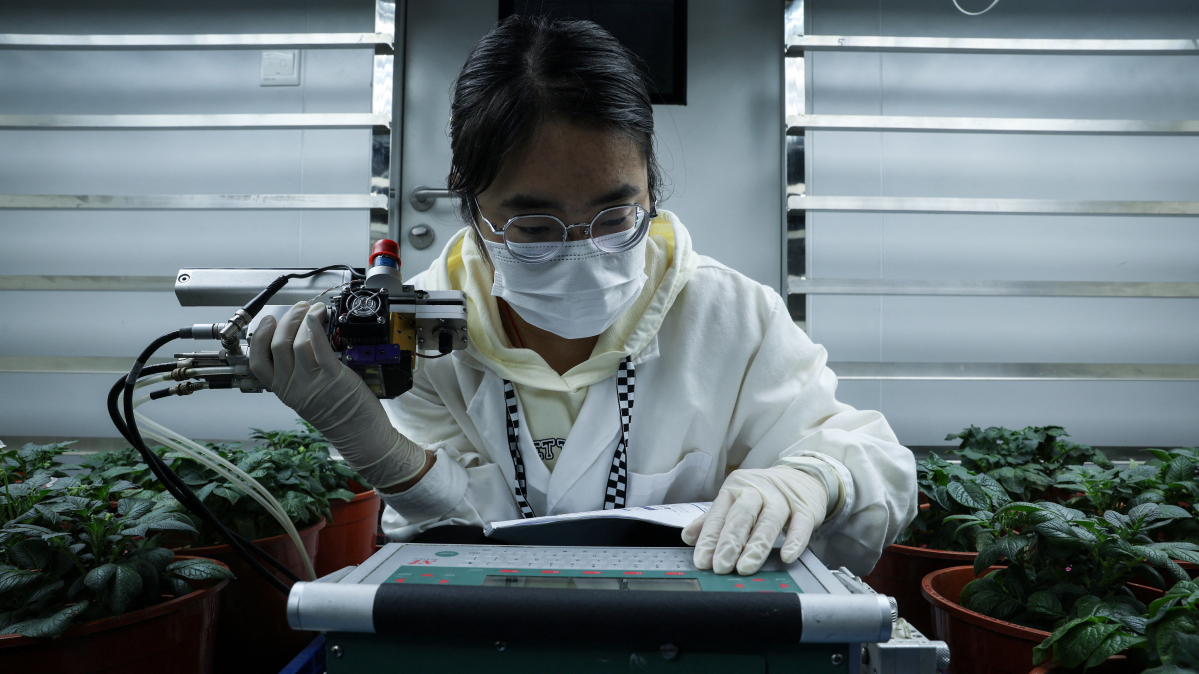Ukraine's Zelenskyy says negotiations on war settlement 'close to a real result'
Negotiations conducted with the United States and European nations, aimed at ending the nearly four-year war with Russia, were "very close to a real r...

China’s carbon dioxide emissions have remained flat and slightly declined over the past 18 months, according to new analysis for climate publication Carbon Brief, marking what could be a historic shift in the world’s largest emitter’s energy and economic trajectory.
The trend, driven by record growth in renewable and nuclear energy and a steady decline in transport-related emissions, has emerged as a central focus at the ongoing COP30 climate conference in Belém, Brazil.
Analysts say the stabilisation of China’s emissions began in early 2024, continuing through mid-2025 despite sustained economic growth. The decoupling of emissions from GDP marks a milestone in China’s long-term climate strategy and suggests the country may be nearing, or has already reached, its long-awaited emissions peak.
The key factor, experts agree, has been an unprecedented surge in renewable energy. China added over 200 gigawatts of solar and more than 60 gigawatts of wind capacity last year alone which more than the rest of the world combined.
These rapid additions have transformed China’s power grid as renewable energy now accounts for over a third of the country’s total electricity generation, while nuclear energy which was previously a small but steady contributor, is playing a greater role as new reactors come online along the eastern coast.
“This is the first time in decades that China’s economy is growing without a corresponding rise in carbon output,” said Lauri Myllyvirta, lead analyst at the Centre for Research on Energy and Clean Air (CREA).
“The clean energy buildout is finally large enough to offset growth in electricity demand.”
The transport sector has also contributed to the emissions slowdown. Electric vehicles now account for nearly half of new car sales in China, and electrification is spreading rapidly across public transit systems, logistics fleets, and ride-hailing services.
Analysts estimate that transport emissions declined by roughly 3% year-on-year in 2025. This is largely due to strong government incentives, widespread EV adoption, and improved fuel efficiency across the transport sector.
At the global level, China’s emissions plateau has brought cautious optimism to COP30, where delegates are struggling to bridge the gap between current national pledges and the reductions needed to meet the Paris Agreement’s 1.5°C target.
The UN Environment Programme has warned that global emissions must fall by at least 43% by 2030 to stay on track, yet most countries remain behind schedule.
Against this backdrop, China’s progress stands out as one of the few bright spots at the summit.
Chinese officials have highlighted the achievement as proof that developing nations can pursue economic growth and emissions reduction simultaneously. Meanwhile, Western negotiators are urging Beijing to formalize its peak and accelerate its transition away from coal.
“China’s stabilization is significant, but the world needs confirmation that the decline is permanent,” said an EU climate delegate. “This could redefine global climate arithmetic if sustained.”
Experts say that if China maintains its current pace of clean energy expansion, it could achieve a sustained decline in carbon emissions years ahead of its official 2030 target.
Yet the path ahead will depend on whether the country can continue scaling up renewables, invest in grid upgrades, and curb emissions from heavy industry.
The plateau in China’s carbon emissions has become a symbol of both progress and urgency. It demonstrates that large-scale stabilization is possible but also that global success will require every major economy to accelerate its transition.
Vince Zampella, co-creator of the Call of Duty franchise, has died after a Ferrari crash on Angeles Crest Highway north of Los Angeles.
A major power outage swept across San Francisco on Saturday, leaving up to 130,000 customers without electricity, disrupting traffic and forcing some businesses to close temporarily, officials said.
Israeli Prime Minister Benjamin Netanyahu said Israel is monitoring recent Iranian military exercises and will raise the issue with U.S. President Donald Trump during his visit to Washington next week.
Israel’s government has approved the creation of 19 new Jewish settlements in the occupied West Bank, a move that analysts say further undermines the prospects for a viable Palestinian state.
Swedish customs officials have boarded a Russian freighter anchored in Swedish waters after confirming that the vessel and its owners are subject to European Union and U.S. sanctions.
Dense smog has forced authorities in Pakistan’s Punjab province to shut several major motorways on Tuesday (16 December), stranding commuters as visibility dropped sharply and Lahore’s air quality reached hazardous levels.
At least 37 people have been killed in flash floods triggered by torrential rain in Morocco's Atlantic coastal province of Safi, Moroccan authorities said on Monday (15 December).
Climatologists say Poland has logged its warmest December in 74 years, with 2025 continuing a run of above-average temperatures and repeated national records.
As the world marks the tenth anniversary of the Paris Agreement, progress in combating global climate change is mixed.
An extratropical cyclone has caused widespread disruption across Brazil’s São Paulo state, with powerful winds toppling trees and power lines, blocking streets and leaving large parts of the region without electricity.
You can download the AnewZ application from Play Store and the App Store.

What is your opinion on this topic?
Leave the first comment